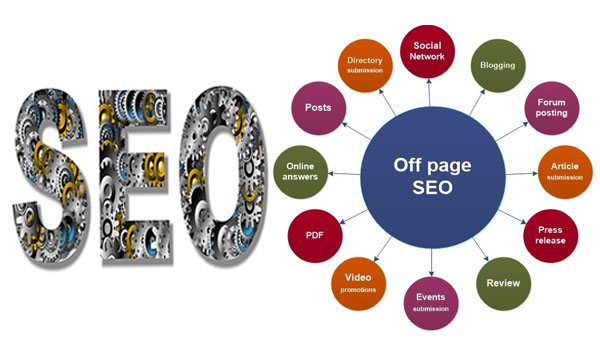In an era where digital presence is as crucial as physical existence, web development emerges as a linchpin of the modern world. It empowers businesses to extend their reach beyond geographical limitations, enables individuals to express their creativity globally, and facilitates seamless interactions that transcend physical boundaries.
Web development, thus, stands as the cornerstone of this digital revolution, shaping the way we perceive, interact with, and harness the power of the internet. Its significance reverberates across industries, influencing how we conduct commerce, access information, and forge connections in an increasingly interconnected world.
Understanding Web Development
Web development encapsulates the intricate craftsmanship behind creating, maintaining, and enhancing websites and web applications. It’s the convergence of technical prowess with top web development companies, design finesse, and user-centric functionality aimed at constructing digital landscapes that captivate, inform, and engage users across the globe.
The scope of web development spans a vast terrain, encompassing multiple disciplines and methodologies. From the visible, user-facing aspects to the behind-the-scenes functionalities, web development covers:
- Front-end Development: The facet of web development concerned with what users see and interact with. It involves crafting visually appealing, intuitive interfaces using languages like HTML (Hypertext Markup Language), CSS (Cascading Style Sheets), and JavaScript. Front-end developers focus on optimizing user experience and interface design.
- Back-end Development: This realm operates behind the scenes, dealing with the server-side functionalities of websites. Back-end developers work with databases, server logic, and the intricacies of making a website function seamlessly. They utilize languages and frameworks like Node.js, PHP, Python, and Ruby to create robust and dynamic web applications
- Full-stack Development: A comprehensive approach encompassing both front-end and back-end development. Full-stack developers possess a holistic understanding of web development, capable of handling the entire web development process, from conceptualization to deployment.
Core components of web development
Front-end Development
Front-end development, often referred to as client-side development, constitutes the visual and interactive elements of websites that users directly interact with. It involves the creation of the user interface and experience, focusing on aesthetics, functionality, and usability.
At its core, front-end development is about translating design concepts into reality, using languages and frameworks specifically tailored for creating engaging user interfaces. It encompasses the layout, design, behavior, and interactivity of a website.
Technologies and Tools
- HTML (Hypertext Markup Language): The backbone of web development, HTML provides the structure and framework for web pages by defining the content hierarchy. It structures text, images, links, and other elements within a web page.
- CSS (Cascading Style Sheets): CSS complements HTML by styling and designing web content. It controls the layout, colors, fonts, and overall visual presentation of web pages, enhancing their aesthetics and user experience.
- JavaScript: This dynamic scripting language brings interactivity and functionality to web pages. It enables actions like form validation, animation, dynamic content updates, and interaction with web elements, making websites more responsive and engaging.
Back-end Development
Back-end development, also known as server-side development, focuses on the server and database side of website functionality. It involves managing data, server logic, and ensuring the smooth functioning of web applications.
The back end powers the front end by handling user requests, processing data, and generating appropriate responses. It involves creating and maintaining the server, databases, and application logic required to deliver dynamic content and functionalities to users.
Technologies and Tools:
- Node.js: A runtime environment that allows running JavaScript on the server-side, enabling developers to create scalable and efficient network applications.
- PHP: A widely used server-side scripting language, particularly suited for web development, known for its simplicity and ability to integrate with various databases.
- Python: Known for its readability and versatility, Python is used for web development due to its robust frameworks like Django and Flask, facilitating rapid development.
- Ruby: Renowned for its elegant syntax and productivity, Ruby is often associated with the Ruby on Rails framework, which accelerates web application development.
Full-stack Development
Full-stack development encompasses proficiency in both front-end and back-end technologies. A full-stack developer possesses a comprehensive understanding of the entire web development process, from designing user interfaces to managing server-side operations and databases.
They can navigate across the complete development stack, allowing them to handle projects independently or collaborate seamlessly within cross-functional teams. Full-stack developers possess a versatile skill set, enabling them to bring projects from conception to completion, catering to diverse project needs.
Key Aspects of Web Development
Responsive Design
Responsive design is pivotal in today’s web development landscape. It ensures that websites adapt seamlessly to various devices and screen sizes, providing an optimal viewing and interaction experience. The significance lies in enhancing accessibility and usability, regardless of whether users access the website via a desktop, tablet, or smartphone.
This adaptability fosters user engagement and retention, as a responsive design eliminates the frustration of navigating through distorted or dysfunctional layouts. It contributes significantly to user satisfaction, positively impacting metrics like bounce rates and session durations.
Frameworks like Bootstrap and Foundation, coupled with CSS media queries, play a crucial role in achieving responsive design. These technologies enable developers to create flexible layouts and fluid grids that adjust gracefully to different screen sizes. Best practices involve prioritizing mobile-first design, optimizing images and content, and employing flexible CSS units to ensure responsiveness across devices.
Web Development Frameworks
Web development frameworks streamline the development process by providing pre-built components, tools, and structures that expedite coding and enhance efficiency. They offer a standardized way to build and maintain web applications, reducing development time and minimizing errors.
Examples and Use Cases
- React: Known for its component-based architecture, React facilitates building interactive user interfaces. Its flexibility and reusability make it ideal for single-page applications and dynamic UIs.
- Angular: A robust framework by Google, Angular simplifies the development of complex web applications. It emphasizes modularity, making it suitable for large-scale projects.
- Django: A high-level Python web framework, Django, promotes rapid development, security, and scalability. It follows the DRY (Don’t Repeat Yourself) principle, ensuring efficient and maintainable code.
Web Development Process
The web development process commences with meticulous planning and strategizing. This phase involves understanding client requirements, defining project goals, creating wireframes, and outlining the project scope. Establishing a clear roadmap ensures a structured approach and sets the foundation for successful development.
Executing the development involves translating the planned strategy into action. It encompasses coding, designing, and integrating various components to build the website or application. Collaboration among developers, designers, and stakeholders is pivotal to ensure alignment with the project vision and objectives.
Testing forms a critical phase where the developed website undergoes rigorous examination to identify and rectify errors, bugs, or performance issues. Optimization involves refining the website for improved speed, functionality, and user experience. This iterative process ensures the delivery of a polished, high-performing end product that meets user expectations and industry standards.
Conclusion
Web development’s paramount importance lies in its ability to craft immersive online experiences that transcend boundaries. It bridges the gap between businesses and their audiences, providing a platform for global visibility, engagement, and revenue generation. From the creation of captivating websites to the development of sophisticated web applications, it plays a pivotal role in defining brands, fostering connections, and driving growth.
It empowers businesses to thrive in a competitive market, enables individuals to express their creativity on a global canvas, and propels technological innovations toward new frontiers.

































